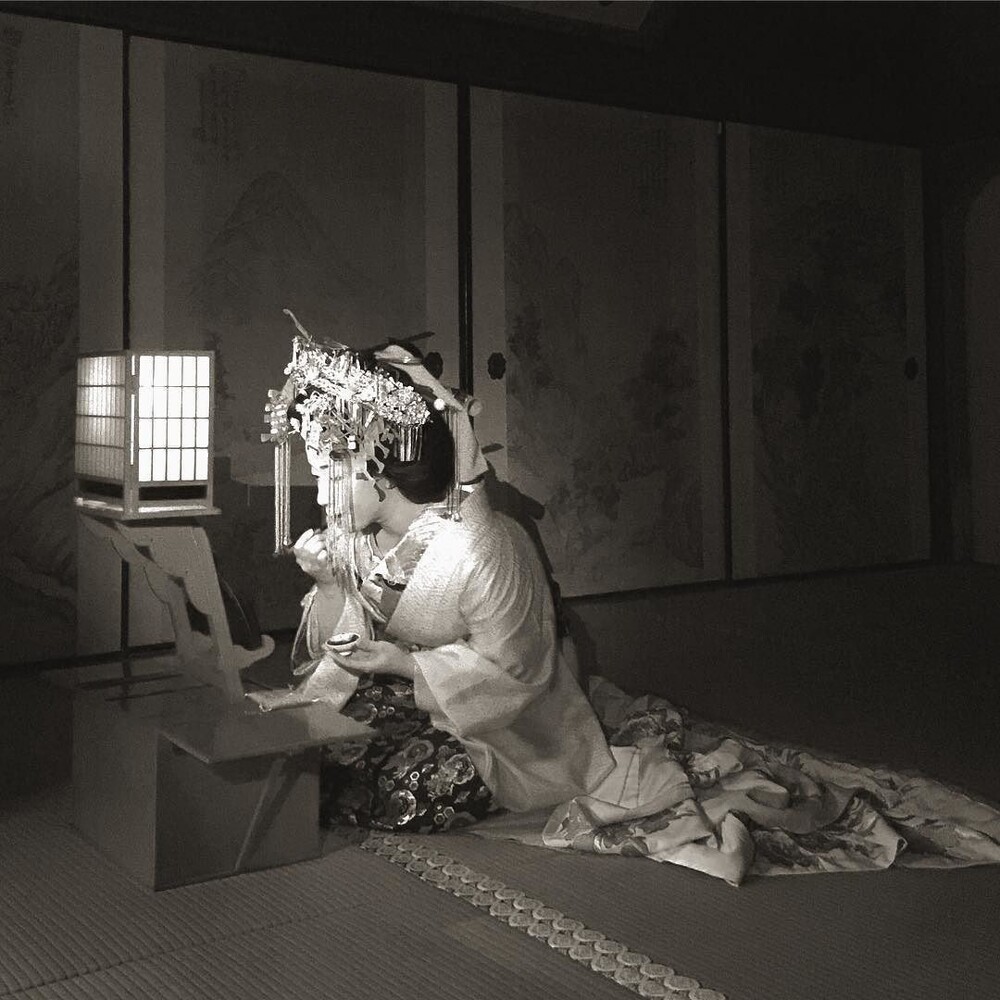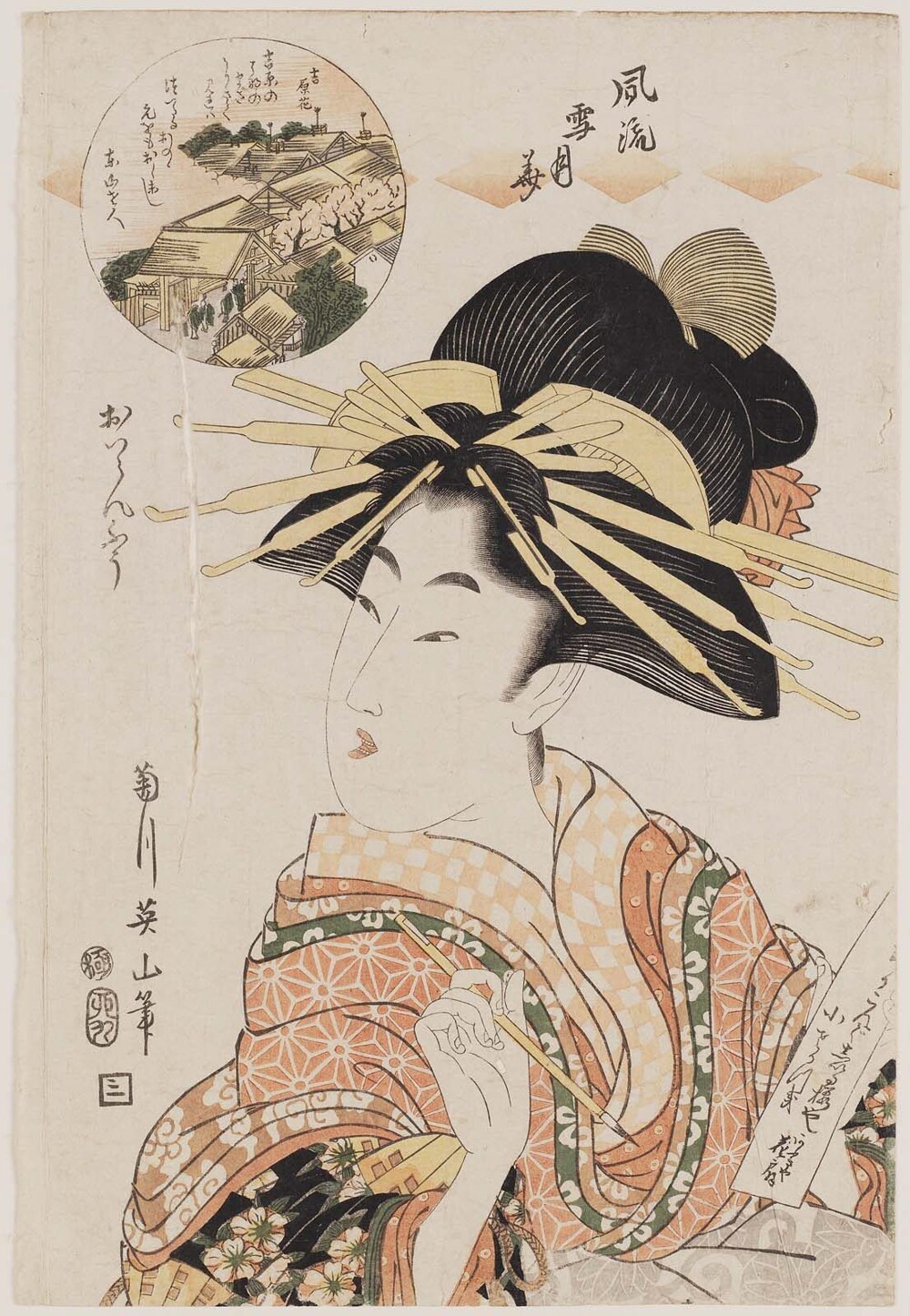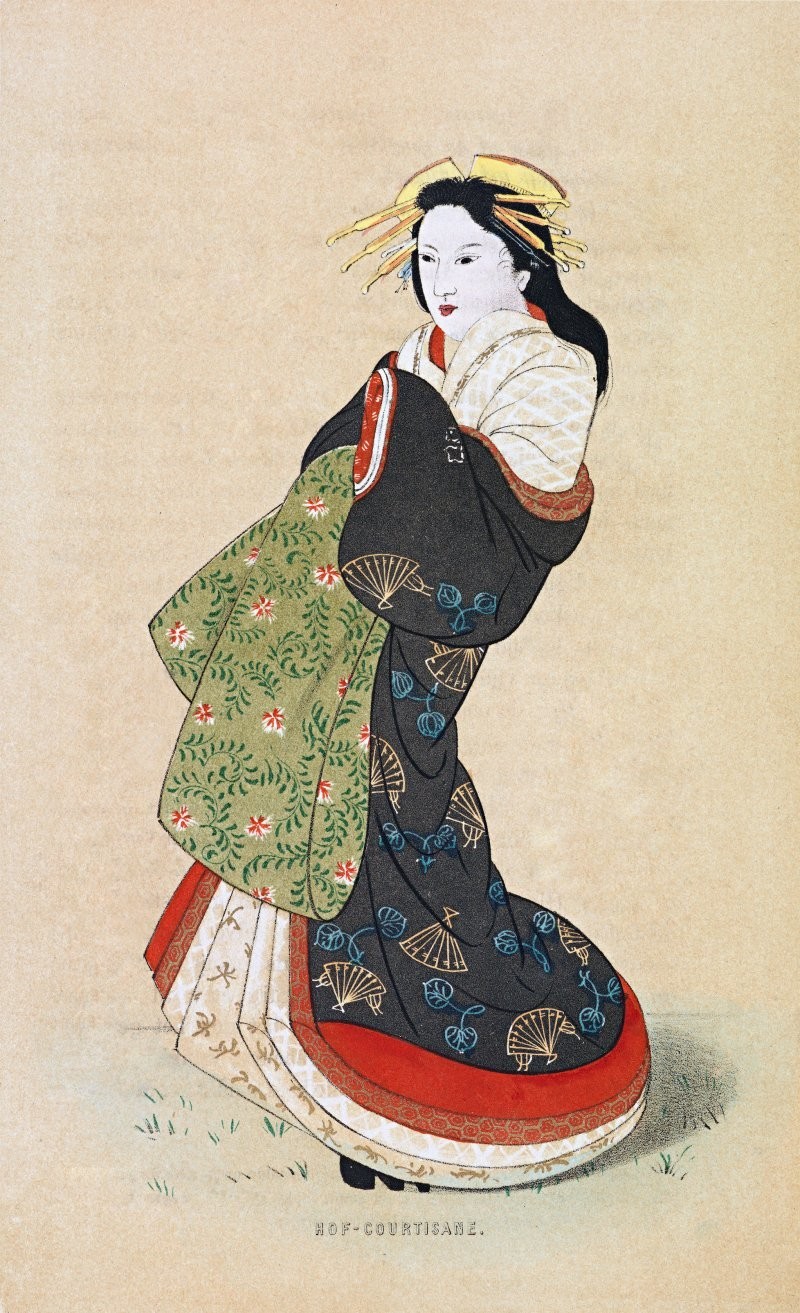The difference between geisha and yujo with oiran (8 photos)
The image of a sophisticated geisha gracefully pouring sake for a man is a fairly popular image when it comes to Japan. But geisha were not sex workers, as many people think, they were for visual pleasure, for sophisticated conversation. 
A little bit of history. The first Japanese brothel was created in 1193 to help cope with potential desertion of soldiers. Typically, sex work was carried out in bathhouses and tea houses. Shoji Jin'emon (Tokugawa dynasty) ordered the creation of a separate quarter for entertainment in order to distinguish between the ordinary life of the Japanese people and the cheerful one. The first quarter was called "Yoshiwara" and then it became a common name for such places.
It was not easy to get into it, and even more difficult to get out: it was well guarded, and was surrounded by a ditch and a high wall. Even if the girl wanted to run away, it was almost impossible; she was allowed to go outside the Yoshiwara, but only in the company of a policeman. 
During the same period, sex workers became officially licensed and were called yujo. Plus, a hierarchy appeared, in the first places of which were Oiran and Tayu. The girls were easily recognized by their characteristic high-platform shoes, which they wore without socks. The foot was a highly erotic place in Japanese culture because kimonos usually covered the entire body, including the feet, with only the toes visible. Men have always treated them with special trepidation. And another distinctive feature was the specially tied obi belt in the front. This made it easier to remove. 
Taiyu is preparing for the performance
There were a lot of rules in these neighborhoods. And the main thing was that the girl must clearly consent to sex. If she says “no,” then the man, without objection, should go in search of another. Most often, a Japanese man went to the same yujo, and there were often cases when “clients” fell in love with their courtesan. The solution was to buy her from the owner of the brothel, but it cost incredible money. 
Getting a job in the “fun quarter” was very simple: either the girls were sold there by their own parents and they grew up there as pupils, or the girl was arrested as a sex worker in tea houses and she was automatically sent to the quarter.
Elite girls in Japan were taiyu or oiran. They were essentially one and the same, only the Oiran lived in Edo, and the Tayu in Kyoto. They were something like yujo, but they could also entertain the visitor by dancing, singing, were well versed in how to make exquisite ikebana and had excellent manners. They did not work in the “fun quarters”; they could only perform at events. They lived together, but they had two-room apartments, personal servants, and in order to arrange a meeting, you first had to talk to her mentor.
Some oiran were considered even higher in rank than geisha, despite the fact that it was possible to spend the night with them. But this night was very expensive, and not after the first meeting. 
Yujo tied his obi at the front to make it easier to remove, while tayu and oiran did it to emphasize their artistry. Moreover, the Tayu tied it in the shape of a heart, while the Oirans hung it more freely. All sex workers whitened their faces, but the elite ones also deliberately blackened their teeth, because in those days it was considered a sign of passion and sexuality. Tayu kimono have always had gold color in the embroidery or trim. 
Geisha
Geisha differed from oiran, yujo and taiyu in that they did not have sexual contact with guests. But they still had some similarities. Sophistication, refined manners, the ability to carry on a conversation about anything - to captivate the guest not only with the prospect of an erotic date, but to give him aesthetic pleasure.
Geisha did not become servants, pouring sake and playing the shamisen. They were cared for, they were respected, and if she poured a glass for a guest, he certainly had to pour one for her in return. Externally, geishas also differed: hairstyle, clothing style, wearing tabi socks. 
Geisha in training
As soon as geisha rose in society, the era of oiran began to end. It was easier to get to geishas, they were funoh and just like that, in 1761 there was the last recorded Tayu. Oiran existed until the end of the 19th century. And today you can meet tayu in the Watigaya tea house, but they no longer provide sex services, functioning as geisha. But the true oiran have disappeared and their images can only be seen at the “Oiran Parade” in Japan, where many Japanese women happily participate in the festival, spending a long time choosing outfits and accessories. 
Note: On May 12, 1956, the “prohibition of prostitution law” was issued. It stated that “prostitution degrades human dignity and is contrary to morality in a society that cares about its own appearance.” Involvement in sex work was punishable by death, but this law did not apply to the girls themselves.
The “fun quarters” themselves ceased to exist in 1957.






















